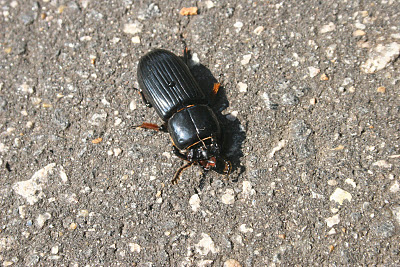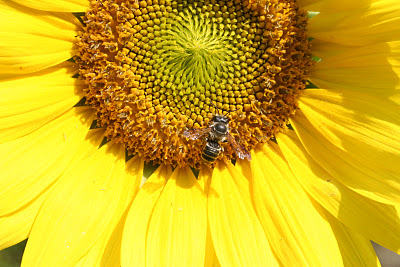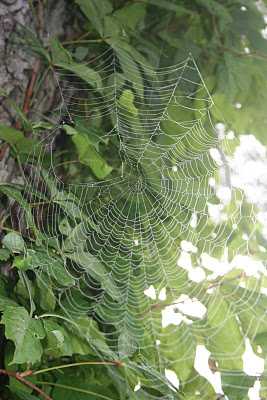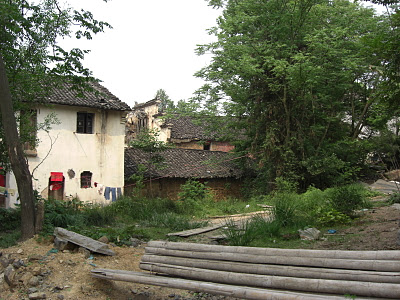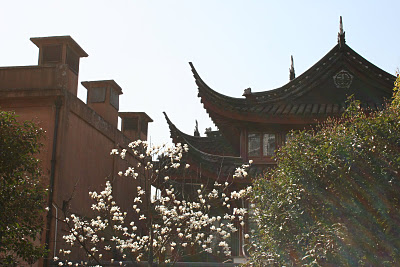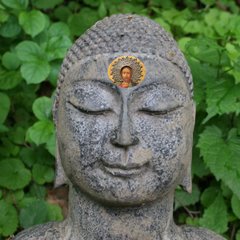As I got off the plane at about 3:40 a.m. local time, I noticed- having just woken up- that I was rather negative. I often notice this state first thing in the morning when the parts are not properly connected yet. This leads me to conclude that the first thing in the morning is not a good time to take a barometric reading of our emotional state; it isn't likely to be accurate, and we shouldn't let the first impressions of how we feel prejudice the possibilities of the day. Best sit back an hour or two and wait to see just exactly how it is once the centers get a better channel of communication up between them.
Now, on to today's subject matter.
The impressions of life are like a torrent of water rushing into our organism. As they arrive, they encounter the solid, stony resistance of our personality. Turbulence results; water needs to seek the lowest point, it has a wish to descend and to feed the ocean. The stone, however, stands in its way.
There is something miraculous about this exact set of conditions: under other circumstances, in other temperatures, water would be solid or stone might be molten. But here we are, in these exact conditions. We're in luck! Special things can happen.
Stone channels water; water erodes stone. Eventually the process of erosion produces soil.
Finer particles, imbued with the moisture, create new possibilities. A new factor- the vibrant green of organic life- emerges. Intimately assembled from the finest particles of both elements, water and earth, it breaths air and sustains itself on its own inner fires.
The water has to submit to the discipline of interaction with stone in order to reach its destination. In doing so, it alters it: the stone softens, the water informs it, even as the landscape guides it. In Lila, Robert Pirsig describes these forces as the static and dynamic forces of life.
We have to take in the impressions of our lives whether we want to or not. They arrive on the doorstep of consciousness relentlessly. The question is whether we take them in superficially, habitually, and let their seed fall on fallow ground, or whether we take them in more consciously, thereby creating new possibilities within ourselves.
Undertaking the effort of learning how to take in impressions with more attention—so that they fall deeper within the organism-involves discipline. The concept is common to just about every spiritual work on the planet. The question in front of me today is under what authority the discipline is understood to be.
The famous parable of the centurion (Matthew, 8:5) whose servant was healed by Christ underscores the idea that just an understanding of authority alone makes miraculous things possible for man. The palsied servant was not present, but because the legionnaire understood what authority meant, Christ healed him, commenting, "I have not found so great faith, no, not in Israel."
In life, we encounter authority in many forms. One could discuss conventional authority at length, but today we’re going to stick to the question of what spiritual, or inner, authority a man agrees to submit to.
With extraordinarily few exceptions, every human being’s “original spiritual authorities” are their parents. Indeed, Gurdjieff advised his pupils that they should learn to properly honor their parents for this very reason.
Typically, when humans grow older, unless they are atheists or agnostics, they submit to the authority of a religion, the external structure. Within that context they may submit to a hierarchy of individuals, but the overarching principles are those of the church or temple itself.
Within more esoteric works, one initially agrees to submit to the discipline of a teacher. It’s usually considered a terrific thing to find a teacher because then one has guidance.
It strikes me, however, that all of these logical steps fall short of the mark. It’s all still an outsourcing of authority.
The discipline that a man or woman ultimately must learn to submit themselves to is their own discipline. We cannot assume responsibility for ourselves, for who and what we are, unless we agree with ourselves to undertake our own work.
We must make our own efforts, not the ones others suggest for us. It is just this effort to discover and submit to the higher inner authority that already lies within us that is necessary.
So why aren’t we willing to come to something more definite for ourselves in our own work?
There is a tendency for us to actively wish that everything within remains as amorphous and undefined as possible. It’s nice if the picture’s fuzzy. As long as we fail to focus the lens, we can imagine all kinds of fantastic imagery that is just… about… to… emerge and make for a very beautiful picture. Any minute now. Until that happens best keep the lens unfocused, because, well, it might just ruin everything.
I don’t think this works. The inner lens needs to become more focused, the picture needs to become clearer. We need for ourselves to make an effort to know what the image we are composing consists of.
So we have to learn to demand of ourselves that we sharpen our attention to inner study, that we redouble our efforts at seeing just exactly what it is that is going on inside us. If we are going to make any profit from living in the midst of this rushing waterfall of impressions—and in this we appear to have little or no choice, do we?—we need to keep our wits about us.
What do we ask of ourselves in this daily life? When we see our negativity, how do we meet it? What inner tasks do we set for ourselves? Under whose authority do we work?
Life flows inward.
If we truly have a wish to be, we must cultivate an inner discipline that helps us to be there as it arrives.
Stay tuned for more reports from China.
May your trees bear fruit, and your wells yield water.




